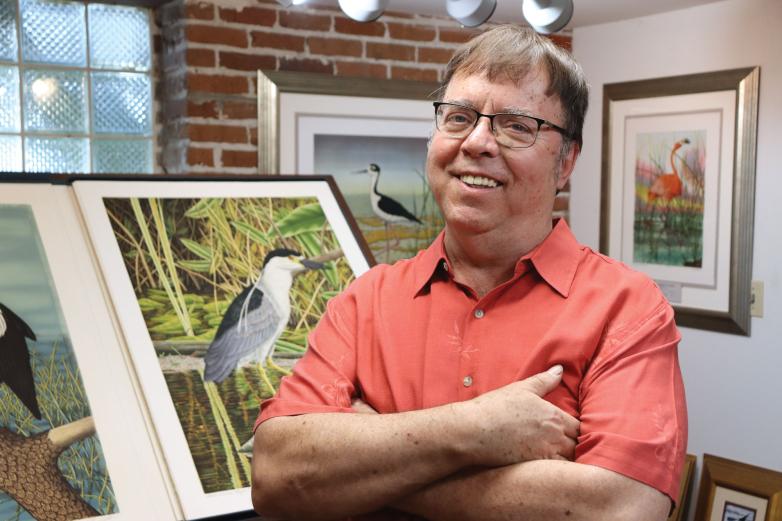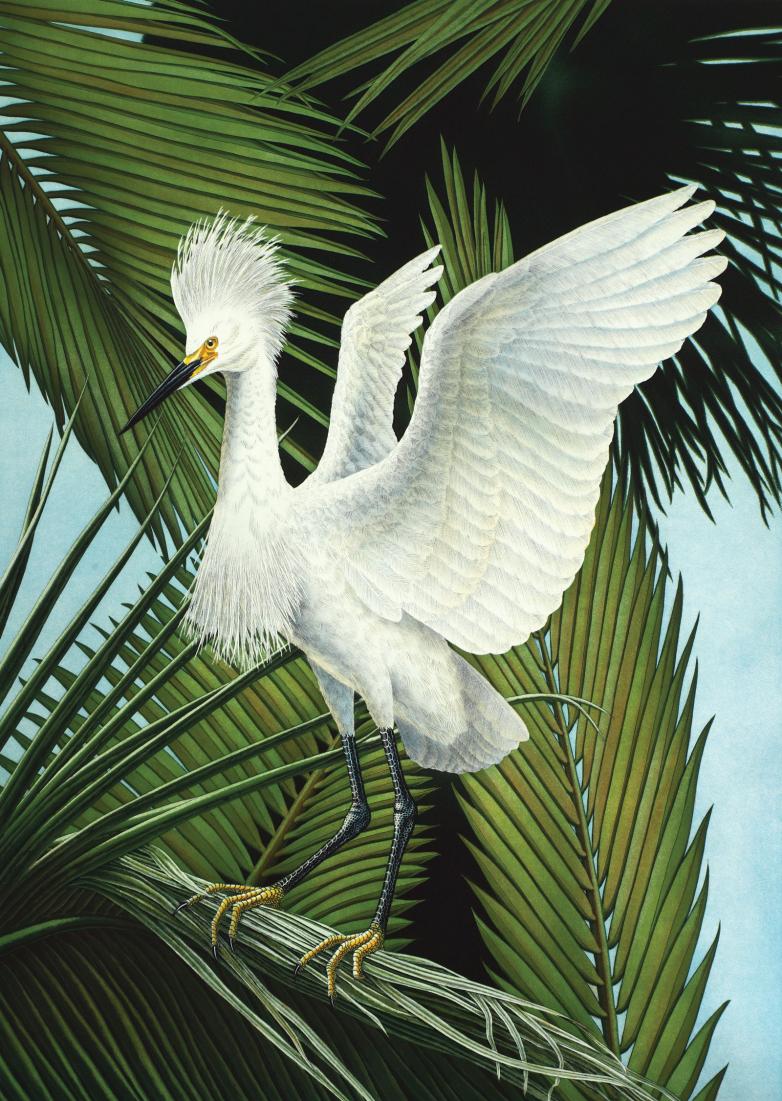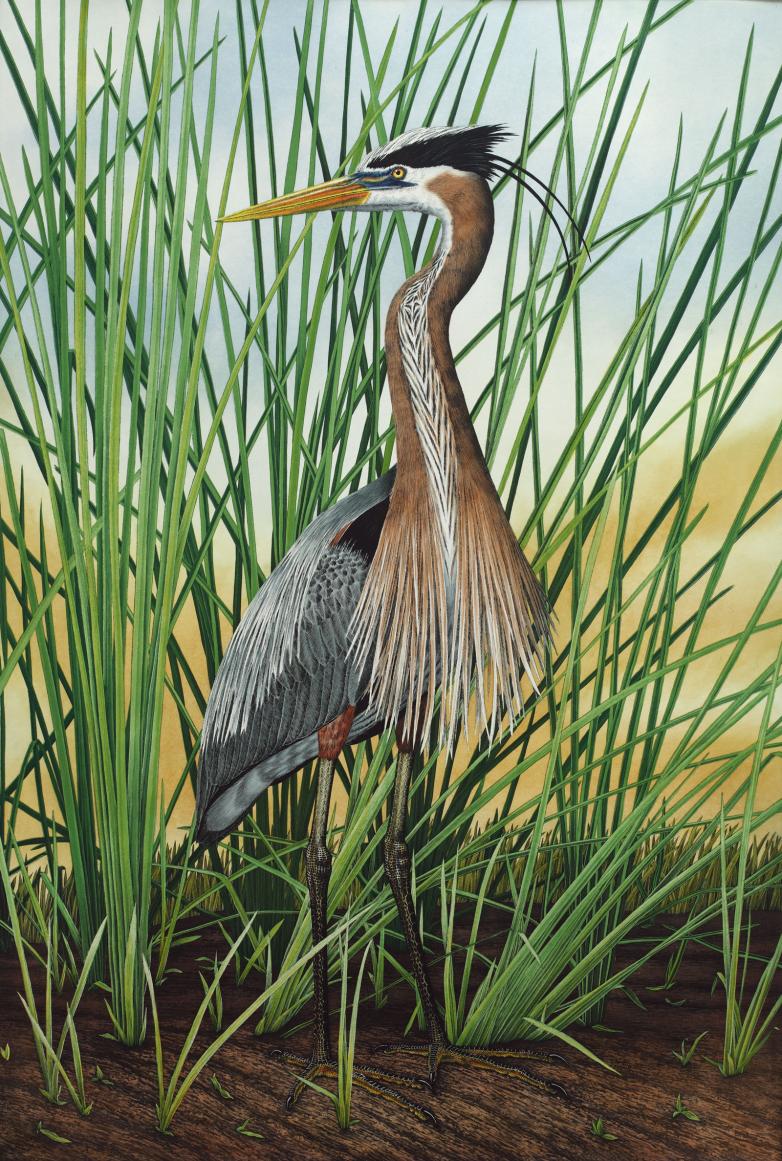The Science & Beauty of John Costin’s Bird Art
Artist and collector John Costin carries forward the centuries-long tradition of depicting the natural world
Throughout history, many cultures have depicted birds in art, from the elaborate mosaics of ancient Rome to the elegant drawings of the Renaissance. Birds have also become subjects and inspiration for Tampa, Florida, native John Costin. Etched Feathers: A History of Bird Art, on view at the Tampa Bay History Center through October 15, 2023, explores the progression of bird art across the years. The exhibition highlights the ways that artists like Costin have contributed to this tradition, using their talents to bring the beauty of birds to life.
“It’s interesting to see how various naturalists portrayed birds through time and history,” Costin said. He is a collector of antique bird prints and has pieces in his collection dating back to the 1600s. All of the items on view in Etched Feathers are from Costin’s personal collection and are joined by work created by the artist himself.
Over the last five centuries, bird prints were often created to be published in books alongside ornithological data. Two famous examples are John James Audubon’s The Birds of America, published between 1827 and 1838, and Mark Catesby’s The Natural History of Carolina, Florida and the Bahama Islands, published in the mid-1700s. Many of the antique prints in Etched Feathers are from books and were made as a form of scientific documentation. Heron Wading Bird, one of the oldest prints in the exhibition, is a 1669 hand-colored woodcut by Conrad Gesner and was issued in Historia Animalium. Alexander Wilson’s depiction of a Carolina parakeet from American Ornithology, published between 1808 and 1814, is one of the artworks that led to the naturalist and illustrator being called the “father of American ornithology.”
Costin, like many contemporary nature artists, creates stand-alone prints. “I want the science right when I do the piece,” he said. “But I also see it as fine art.” Costin’s primary medium is etching, which was developed during the 1500s as an alternative image-making process for artists. Costin uses one to five copper plates that are individually hand-wiped with several colors of ink to create an image on paper. Each piece is meticulously hand-colored, giving the birds a much more lifelike appearance. The result is an intricately detailed print, which takes months to create. No computers or photography are ever used, and editions range from one to 250, with no two pieces the same.
From pelicans and hawks to spoonbills and roadrunners, Costin’s etchings capture the beauty and diversity of the avian world. Twilight Current, a standout piece, is a large watercolor that features illuminated wood storks around a mangrove tree against a dark red background. Costin was inspired to create the work while contemplating how the contemporary climate has and will continue to alter the natural ecosystems birds inhabit.
Etched Feathers highlights the interconnectedness of art and ornithology. Costin’s artwork is both stunning and scientifically accurate, reflecting his deep understanding of bird anatomy and behavior. He considers his work to be portraits with birds as the subjects, which are frequently depicted life-size.
Costin’s goal is to present his pieces in such a way that “the viewer is not just a distant observer. The person looking at the art is more engaged with it and has a reaction to what they see … and discovers something new they have not noticed before.”
Through his art, Costin brings the beauty of birds to life, inspiring artists and bird enthusiasts alike. The exhibition is a testament to the ability of art to connect us with the natural world in meaningful and profound ways.


















